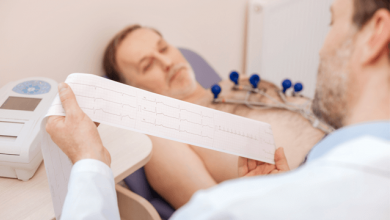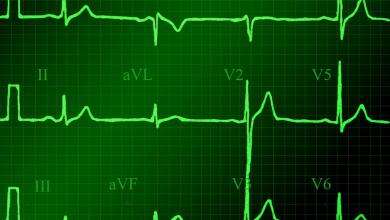Search results
Author(s):
Boris Rudic
,
Rainer Schimpf
,
Martin Borggrefe
Added:
3 years ago
Short QT syndrome (SQTS) is a rare, inheritable channelopathy of the heart characterised by abnormally short QT intervals on the electrocardiogram (ECG) and an increased propensity to develop atrial and ventricular tachyarrhythmias in the absence of structural heart disease.1,2 SQTS was first described as a new clinical entity by Gussak et al. in 2000.1 Until then shortening of the QT interval…
View more
Inherited Channelopathies and Cardiomyopathies - When Is Invasive Risk Stratification Needed?
Author(s):
Kit Chan
,
Hung-Fat Tse
Added:
3 years ago
Article
Author(s):
Shubhayan Sanatani
Added:
3 years ago
In children and young adults, sudden cardiac death (SCD) occurs in approximately 1-2 per 100,000 population.1,2 While the overwhelming majority of occurrences of SCD occur in the adult population and are due to ischemic heart disease, very few cases in a pediatric population are. Pediatric SCD is a relatively uncommon occurrence whose underlying etiology often remains elusive. A long list of…
View more
Author(s):
Dmitriy Kireyev
,
Vipul Gupta
,
Mikhail V Arkhipov
,
et al
Added:
3 years ago
The differentiation of wide QRS complex tachycardias presents a challenging diagnostic dilemma to many physicians despite multiple published algorithms and approaches.1 The differential diagnosis includes supraventricular tachycardia conducting over accessory pathways, supraventricular tachycardia with aberrant conduction, antidromic atrio-ventricular reentrant tachycardia, supraventricular…
View more
Unmissable EP Papers
Author(s):
Demosthenes G Katritsis
,
Andrew Grace
,
Angelo Auricchio
,
et al
Added:
3 years ago
Article
Author(s):
Demosthenes G Katritsis
,
Bernard J Gersh
,
A John Camm
Added:
3 years ago
Early repolarisation pattern is defined electrocardiographically by a distinct J wave or J-point elevation that is either a notch or a slur of the terminal part of the QRS entirely above the baseline, with or without ST-segment elevation. The peak of the notch or slur (Jp) should be ≥0.1 mV in two or more contiguous leads, excluding leads V1 to V2 (see Figure 1).1,2 Early repolarisation syndromes…
View more
Author(s):
Konstantinos N Aronis
,
Rheeda L Ali
,
Jialiu A Liang
,
et al
Added:
3 years ago
The pathophysiology of AF is complex and incompletely understood to date.1,2 AF is a progressive disease of the atria involving a multitude of mechanisms related to its initiation, maintenance and progression. Experimental evidence suggest that AF is characterised by alternations in atrial size, shape electrophysiology, autonomic innervation, and cardiomyocyte metabolism, as well as development…
View more
Author(s):
Giulio Conte
,
Ulrich Schotten
,
Angelo Auricchio
Added:
3 years ago
The Risk of Atrial Arrhythmias in Inherited Primary Arrhythmia Syndromes
The inherited primary arrhythmia syndromes (IPAS) are a heterogeneous group of diseases caused by mutations in genes encoding for cardiac ion channels. People affected by one of these inherited diseases have no overt structural cardiac abnormalities but are at higher risk of sudden cardiac death due to the occurrence of…
View more
Author(s):
Felix Gramley
,
Andreas Goette
Added:
3 years ago
Heart disease is the leading cause of death in the US, with sudden cardiac death (SCD) accounting for most of these fatalities.1 Considering the growing prevalence of coronary heart disease and cardiomyopathies (see Figure 1) that, taken together, cause most SCDs, effective treatments are needed. Since by definition SCD is ‘sudden’ (generally accepted to be within one hour after onset of symptoms…
View more
Author(s):
Manoj N Obeyesekere
,
Andrew D Krahn
Added:
3 years ago
Early repolarisation (ER) is defined as J-point elevation of ≥0.1 mV in two adjacent leads with either a slurred or notched morphology (Figures 1 to 4).1,2 Numerous studies have established an association with ER and increased risk of death and idiopathic ventricular fibrillation (VF).1–5 Clinicians face questions such as patient and family counselling, quantitifying the risk of sudden cardiac…
View more









